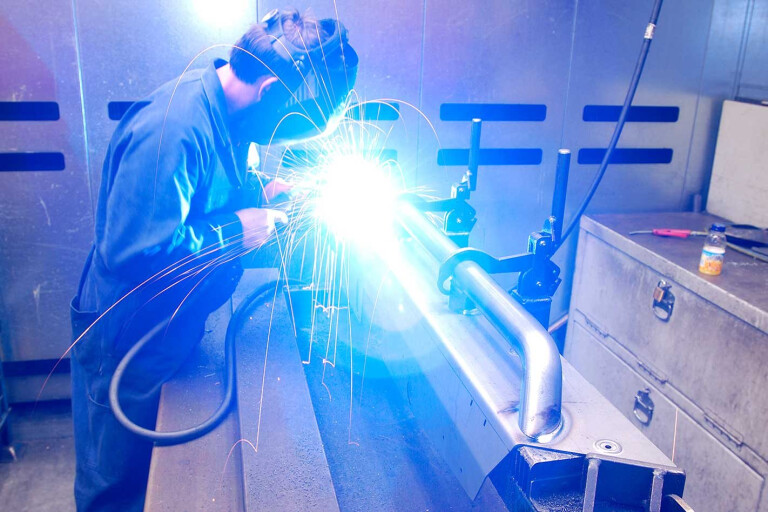
THE days of the ‘backyard’ job in the form of a home-made bullbar or bodged-up cargo drawer system should be long gone in Australia, but, frighteningly, that’s still not the case.
Sure, the days of welding up a bullbar ‘out the back’ are most likely finished, but the influx of cheap gear – easily available via online shopping at ‘half the price’ – with its unknown qualities in regards to strength, safety and ability to withstand load and force, shows there are still people who will sacrifice function and safety to save a few bucks.
Piranha Offroad’s Alan Johnson, an industry expert, put it a bit more bluntly. “If you go back 20 years ago, there wasn’t a cheap high-lift jack – a high-lift jack was a Hi-Lift jack,” he said. “Whether you bought it from me or whoever, it was the same product. Nowadays you can buy high-lift jacks that aren’t safe to jack-up a flea, much less a bloody four-wheel drive or a tractor. I mean, that level of poor-quality product didn’t exist, so nowadays you can see everything from exceptionally great products, to really substandard products.”
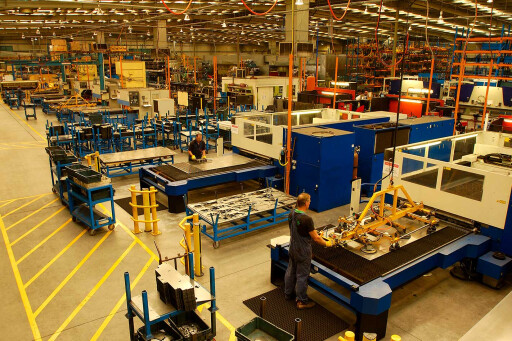 That’s where compliance comes in. The Australian aftermarket industry prides itself on the engineering and quality control of its products, and it backs that with compliance to the Australian Design Rules (ADR). This provides the parameters that result in a vehicle that, when fitted with additional accessories or modifications, still works within those ADRs that were applied to the vehicle when it first hit the showroom floor, in regards to all aspects of its functionality including performance and safety.
That’s where compliance comes in. The Australian aftermarket industry prides itself on the engineering and quality control of its products, and it backs that with compliance to the Australian Design Rules (ADR). This provides the parameters that result in a vehicle that, when fitted with additional accessories or modifications, still works within those ADRs that were applied to the vehicle when it first hit the showroom floor, in regards to all aspects of its functionality including performance and safety.
It may cost more, but that additional cash outlay is a small price to pay for the assurance of that safety. When you realise just how much work goes into testing each individual product to ensure it meets the compliance regulations, you won’t mind paying that bit extra. You also realise it’s far from just a matter of ‘bolting on stuff’ when it comes to fitting any – and we do mean any – accessory to your vehicle.
WITH GOOD REASON
Sit back and have a think about all the accessories fitted to your 4x4. This could include bullbars, cargo drawers, roof racks, spare-wheel carriers, replacement rear bars, long-range fuel tanks, driving lights, rooftop tents, bike/canoe/kayak/fishing rod carriers and more.
 Now think about how much stress, force and strain (plus the chance of impact) some of these items are subject to when you’re out and about on that big trip, or simply driving to and from work. It’s a lot, thus making the whole regulatory process of compliance far more understandable.
Now think about how much stress, force and strain (plus the chance of impact) some of these items are subject to when you’re out and about on that big trip, or simply driving to and from work. It’s a lot, thus making the whole regulatory process of compliance far more understandable.
It’s hard to know how many of us understand the benefit of compliance with accessories – this writer has always known they were ‘out there’ but had little understanding of the actual assurances given to consumers who purchase compliant gear. I’ve been fortunate enough to have always steered myself (and my cash) toward well-known and highly regarded Australian aftermarket manufacturers for any gear, all of whom ensure its products are compliant.
I don’t reckon I am alone, either, in terms of general understanding, as Luke Truskinger, TJM’s Engineering Manager confirmed. “From our experience, 4x4 owners know that it needs to be adhered to, but generally don’t have a full understanding of the details involved,” he said. “We believe that most people know it (the product) needs to meet compliance regulations and the default is ‘ADR’, but, again, I would say few people know the details of these compliance regulations.”
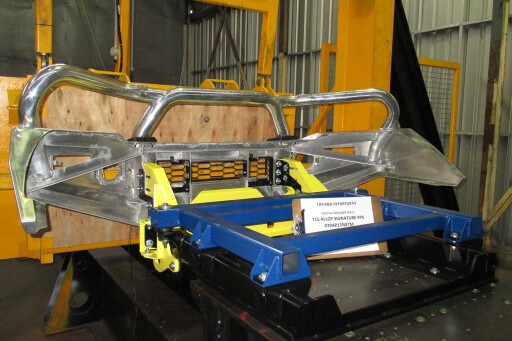 Ironman 4x4’s Adam Craze agreed, adding that the consumer is steadily increasing their knowledge. “I think most people are getting a better understanding on some of the rules and regulations, especially if they want to maximise accessory options on their vehicle,” he said. “Now more than ever with social media and magazines publishing the rules and regulations, the information is much easier to access. I believe they also put trust in the brand to ensure the products they buy meet all the rules, standards and regulations.”
Ironman 4x4’s Adam Craze agreed, adding that the consumer is steadily increasing their knowledge. “I think most people are getting a better understanding on some of the rules and regulations, especially if they want to maximise accessory options on their vehicle,” he said. “Now more than ever with social media and magazines publishing the rules and regulations, the information is much easier to access. I believe they also put trust in the brand to ensure the products they buy meet all the rules, standards and regulations.”
Adam reckoned it’s not just the ADRs that are gaining the attention of buyers: “I would like to think if they are looking to purchase an item that they understand there are minimum requirements that need to be met, whether it is an Australian Standard, an ADR, or another set standard for each item. If they understand this, it may influence them on the product they select, knowing it has been tested and complies.”
ARB’s Product Manager Steve Sampson also brought up the point of confusion between what ADRs actually are and how they are applied, and what they are applied to in the first instance.
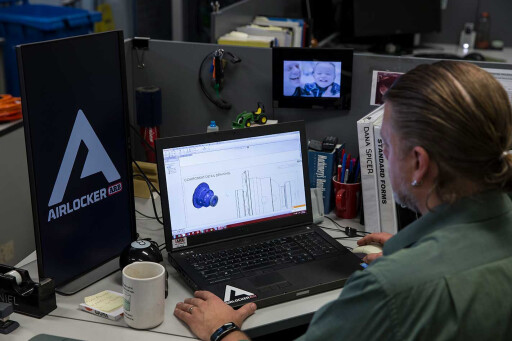 “On a broad scale I’d say customers are aware of the concept of compliance,” he said. “There is confusion as to what ADRs cover what aspect of accessories and what are the vehicle ADR compliance concerns. All new vehicles must comply with all of the relevant ADRs at the time of first registration. After a vehicle is registered, responsibility for the modification rests with the individual state road authorities, e.g. VicRoads.”
“On a broad scale I’d say customers are aware of the concept of compliance,” he said. “There is confusion as to what ADRs cover what aspect of accessories and what are the vehicle ADR compliance concerns. All new vehicles must comply with all of the relevant ADRs at the time of first registration. After a vehicle is registered, responsibility for the modification rests with the individual state road authorities, e.g. VicRoads.”
Steve made a huge point here: with accessories badged ‘ADR-compliant’, buyers know these have been tested to meet the original vehicle’s applicable ADRs, which ensures retention of performance and function of the vehicle. As he commented further, the term ‘ADR-compliant’ can be misinterpreted as applying to a particular accessory, rather than the fact it means the accessory is ‘compliant’ because it does not affect or alter the performance and safety of the vehicle as it was originally designed to meet a specific ADR.
“For example, there is often confusion regarding ADR 69 as having content regarding bullbars. ADR 69 is a vehicle occupant safety rule which many vehicle categories are required to comply,” Steve said. “ARB’s range of SRS air-bag-compatible bullbars, winch bars, side rails and nudge bars are designed, tested and approved so as not to affect the ADR compliance of the vehicle… and they comply with Australian Standard AS4876.1 2002- Vehicle Frontal Protection Systems.”
It’s this confusion of definition that means the education of the general buyer by the local aftermarket industry has been of great assistance for everyone concerned, in terms of helping explain the reasons why the ‘compliant’ product may be more expensive than an equivalent no-name product.
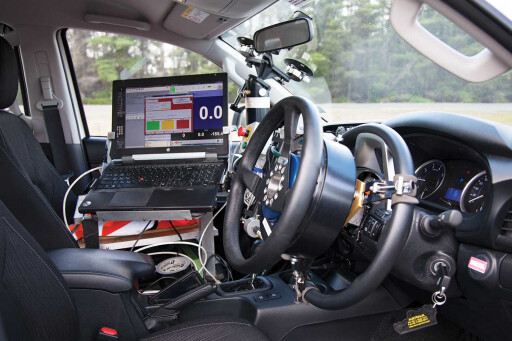 Opposite Lock’s Eddie Ziada explained this is for a specific reason. “We as an industry have taken it upon ourselves to educate the customers and explain, by fitting a specific accessory to your vehicle the vehicle will maintain correct functionality.”
Opposite Lock’s Eddie Ziada explained this is for a specific reason. “We as an industry have taken it upon ourselves to educate the customers and explain, by fitting a specific accessory to your vehicle the vehicle will maintain correct functionality.”
It’s an assurance that costs a bit more than what you’d find with a non-compliant product but, at the end of the day, one worth the money. And it doesn’t come easy for the aftermarket industry, with the design and testing process for compliance taking varying amounts of time, depending on the product.
TJM’s Luke Truskinger explained: “Depending on the product, it can take anywhere from four to 12 weeks for just the ADR testing. We also rigorously test our own products to ensure it meets our standards and earns the TJM brand, which can take up to another three months.” Other brands quote similar times (and again, the process is always product-dependent) but the most assuring thing is that none wish to be rushed or want to cut corners, even with what can be a daunting number of regulations and tests to pass.
“TJM supports the domestic automotive and 4x4 industry authorities continuously to ensure that our regulations and compliance requirements keep the public safe, while providing suitable products for their needs,” Luke said. It’s hard to argue with that.
TESTING, TESTING, TESTING
Most Australian aftermarket brands have in-house facilities, but they also take advantage of external testing facilities when appropriate, as ARB’s Steve Sampson explained.
“The majority of ARB testing is conducted in-house by our engineering teams. ARB has Air Locker, Old Man Emu, fabricated product, canopy, electrical, Original Equipment and production engineering departments to cover all aspects of ARB’s various product groups,” he told us. “Custom jigs or test rigs are also designed and manufactured to test for specifics, e.g., cycles of opening and closing various components.
“Third-party testing is used to validate in-house test results where required. For example, ARB’s original airbag crash tests conducted through Monash University’s Department of Civil Engineering and the recent ANCAP crash tests conducted under ANCAP crash parameters for the off-set frontal crash test.
“Extensive third-party testing is also conducted for our Old Man Emu suspension range, particularly in relation to GVM upgrades.”
 Luke Truskinger explained that TJM is similar: “We have a lot of test equipment, such as dynamic crash rigs to simulate vehicular impact, various hydraulic rigs for ultimate strength, vehicle testing rigs (static and dynamic), airflow and noise testing, durability testing, vibrations rigs, et cetera.”
Luke Truskinger explained that TJM is similar: “We have a lot of test equipment, such as dynamic crash rigs to simulate vehicular impact, various hydraulic rigs for ultimate strength, vehicle testing rigs (static and dynamic), airflow and noise testing, durability testing, vibrations rigs, et cetera.”
I first experienced how stringent and dedicated the Australian aftermarket industry is in regards to rigorous testing and compliance when undertaking an ARB factory tour and watching engineers test ARB’s Air Locker diff lock. The amount of torque the diff lock was subjected to was enough to snap robust Nissan Patrol axles, with the locker itself still operating normally.
This wasn’t the end of the story, though, as the engineers then fitted a cheap, internet-sourced imitation Air Locker – made of mostly cast-iron, if I remember correctly – and then proceeded to destroy the thing. Before any test-set limits had been reached, it shattered into pieces big and small. It was a stark lesson in what can happen when you opt for the cheap, untested and non-compliant alternative product.
The number of ADRs that need to be met to achieve compliance can be overwhelming. Using the bullbar as an example, manufacturers have to meet a number of separate ADRs before they are stamped ADR-compliant.
 Adam Craze revealed the behind-the-scenes process for frontal protection: “When designing the bullbar there are many factors taken into consideration during the design process. We have to meet all ADRs, Australian Standards and, now with more vehicles with camera, sensors and adaptive modules, we need to ensure our bars do not impact on the function of these items,” he said. “In complying with ADRs we are ensuring that safety systems like airbags are not affected and still work in accordance with the vehicle manufacturer’s specifications. We have to take into account that the bar does not obstruct the driver’s vision, must not cover any of the vehicle’s lighting, must not have any sharp edges, corners or items like brackets facing forward, nor should it lean forward. This is a very small sample of the regulations around designing and fitting a bullbar to a vehicle.”
Adam Craze revealed the behind-the-scenes process for frontal protection: “When designing the bullbar there are many factors taken into consideration during the design process. We have to meet all ADRs, Australian Standards and, now with more vehicles with camera, sensors and adaptive modules, we need to ensure our bars do not impact on the function of these items,” he said. “In complying with ADRs we are ensuring that safety systems like airbags are not affected and still work in accordance with the vehicle manufacturer’s specifications. We have to take into account that the bar does not obstruct the driver’s vision, must not cover any of the vehicle’s lighting, must not have any sharp edges, corners or items like brackets facing forward, nor should it lean forward. This is a very small sample of the regulations around designing and fitting a bullbar to a vehicle.”
So just how many ADRs need to be taken into account in the manufacture and design of bullbars for manufacturers wishing to ensure fitment of these accessories doesn’t compromise the vehicle’s relevant ADRs? And what do the various test rigs accomplish when testing the bars? We asked Grad Zivkovic, managing director and chief engineer of Automotive Safety Engineering (ASE), one of Australia’s major compliance testing facilities.
“Bullbars are covered by about half-a-dozen design rules and standards, including airbag compatibility, obstruction of headlights, pedestrian impact, sharp corners at the front, and how they affect engine cooling systems,” Grad said. “If the bullbar is massive – and there are additional lights fitted – it may inhibit airflow to the engine’s radiator and has the potential to cause engine overheating.”
Testing on bullbars can involve two test rigs: a pendulum test facility and a full-frontal test facility, the latter allows testers to crash either a complete vehicle (with accessory attached) or fit the accessory to a test trolley that replicates the vehicle’s chassis. The pendulum test involves – you guessed it – a huge weight swung into the bullbar to measure movement after impact and to ensure it doesn’t exceed ADR specifications for the particular vehicle and bar involved.
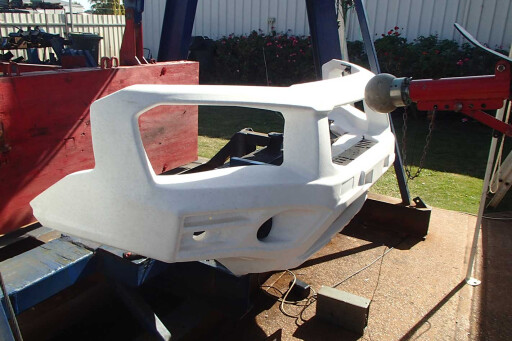 TJM’s Luke elaborated on one of the tests involved: “One of the physical checks we do for airbag compatibility is a low-speed, no-fire crash test. This test simulates the vehicle impacting a rigid, immovable object at a speed where airbags should not deploy. A poorly designed FPS may deploy airbags in these sorts of crashes. This is a safety risk for the occupants and results in a very high repair bill.”
TJM’s Luke elaborated on one of the tests involved: “One of the physical checks we do for airbag compatibility is a low-speed, no-fire crash test. This test simulates the vehicle impacting a rigid, immovable object at a speed where airbags should not deploy. A poorly designed FPS may deploy airbags in these sorts of crashes. This is a safety risk for the occupants and results in a very high repair bill.”
The test is recorded using high-speed cameras and sensors fitted all over the test rig, and the results are checked to ensure the airbags only trigger when they’re supposed to and not earlier or as a result of an impact less than designed for.
The high-speed footage, when played back in slow motion, also allows the TJM testers to check deceleration rates. Measurements are also taken of the bar deformation and how far it has moved within TJM’s patented mount system. This mount system is designed to absorb the energy of the impact, thus minimising how much of the force of impact gets transferred to the occupants within the vehicle, as well as how much load transfers into the chassis itself.
More measurements are taken from the replica chassis post-impact, to see how much it has deformed and whether it stays within ADR specifications for this particular test and the associated vehicle.
DON’T TRY THIS AT HOME
A popular accessory many DIYers build themselves is the cargo drawer. MSA 4X4 is one of Australia’s premier drawer manufacturers, and its owner Shane Miles and his team are passionate advocates of vehicle occupant safety and the various ADRs that account for fitment of cargo drawers – all of which are met by the company’s drawer systems. An example is the process behind testing its Explorer Aluminium Storage Drawer System.
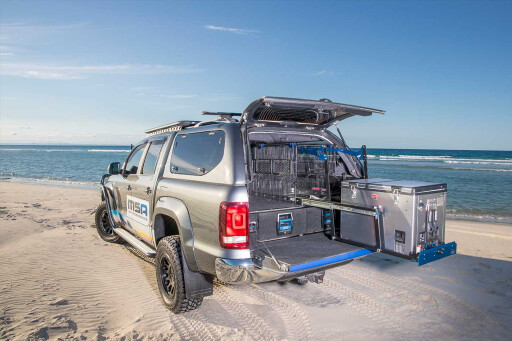 To meet the relevant ADR, Australian Standards (AS) and New Zealand Standards (NZS) compliance, MSA 4X4 supplied ASE with a twin aluminium drawer system for a Toyota Prado 150. The system comprised of a twin-floor storage frame attached to the test sled frame (used in place of the vehicle body shell structure), a partial cargo barrier, three child-restraint points, a drop slide and a separate fridge slide with fridge, plus the company’s fridge barrier and the Prado 150 base frame for the drawer system. The tare weight was, as quoted by ASE, 70kg.
To meet the relevant ADR, Australian Standards (AS) and New Zealand Standards (NZS) compliance, MSA 4X4 supplied ASE with a twin aluminium drawer system for a Toyota Prado 150. The system comprised of a twin-floor storage frame attached to the test sled frame (used in place of the vehicle body shell structure), a partial cargo barrier, three child-restraint points, a drop slide and a separate fridge slide with fridge, plus the company’s fridge barrier and the Prado 150 base frame for the drawer system. The tare weight was, as quoted by ASE, 70kg.
It’s important to note just how dangerous a poorly installed drawer system can be to in-vehicle occupants; cargo inside a vehicle can weigh between 20 and 30 times its actual weight during an impact situation.
ASE used its sled-test facility to conduct what it terms a Horizontal-Full Frontal Sled Test, with an impact speed of 49km/h. This required, according to ASE’s description: “The cargo system to be tested for 60kg cargo barrier capacity, and 150kg cargo restrained by two aluminium drawers. The total mass of 250kg of the test load, plus drop slide, fridge full of 20kg of steel and the fridge barrier.” This test was used to ensure compliance of three separate ADRs, plus the AS/NZS 4034.2:2008 Partial Cargo Barriers for 60kg capacity.
The three ADRs covered were: ADR3/02 Seats and Seat Anchorages – Child Restraint Anchorages Test; ADR34/01 Child Restraint Anchorages (this was conducted for a Type E child restraint for a child weighing from 14kg to 38kg and using an adult lap/sash seat belt and upper anchor point); and ADR42/03 General Safety Requirements, where the cargo storage system must restrain specific loads without being detached from the vehicle floor, nor to have sharp edges that are likely to cause occupant injury in the event of an accident. The system passed all tests. That’s a lot of ADRs, but these have to be met to ensure the vehicle (with accessories fitted) retains its as-new safety levels and performance.
 Think of the child-restraint anchorages as an example; moving these important safety items means new angles of force and tension, owing to the anchors now sitting ‘higher’ up on the drawer. So the testing has to confirm these still operate as per the ADR of the vehicle having the drawers fitted. It makes you think how unsafe those homemade cargo drawers could be if the anchorages were simply ‘moved up’ by the home handyman.
Think of the child-restraint anchorages as an example; moving these important safety items means new angles of force and tension, owing to the anchors now sitting ‘higher’ up on the drawer. So the testing has to confirm these still operate as per the ADR of the vehicle having the drawers fitted. It makes you think how unsafe those homemade cargo drawers could be if the anchorages were simply ‘moved up’ by the home handyman.
In regards to the benefits of testing and compliances, the proof is in the pudding. MSA 4X4 was recently contacted by a customer who had the misfortune of suffering a front and rear shunt at around 80km/h in their Hilux. According to the owners, the Explorer system stayed put and remained attached in the back of the vehicle. However, the second battery inside – only strapped to the fridge barrier – did not, flying out the canopy window.
It is frightening to imagine what may have happened had the cargo drawer system been a non-compliant, untested unit that came loose and crashed through the canopy and/or rear window.
LOAD UP WITH CAUTION
Other load-carrying equipment that can affect compliance with a vehicle’s ADR and/or AS includes cargo barriers, roof racks, roof platforms (and associated accessories), rooftop tents and luggage pods, and bike/watercraft carriers (roof-mounted or towbar-mounted). Cargo barriers are subject to ADR42/00, in which “any internal or external fittings are illegal if they are likely to increase injuries of
vehicle occupant.”
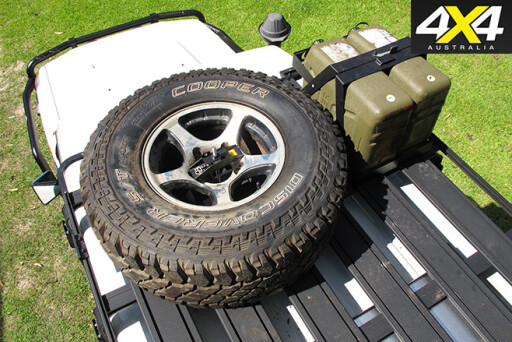 Think of that spare tyre, portable gas bottle or Esky in the back of your cargo area and you can see the importance of meeting this regulation. Roof racks and canopies must be tested to loading requirements of AS 1235-2000 Road Vehicles – Roof Load carriers – Roof Bars Sec 5.1, 5.2 and 5.3.
Think of that spare tyre, portable gas bottle or Esky in the back of your cargo area and you can see the importance of meeting this regulation. Roof racks and canopies must be tested to loading requirements of AS 1235-2000 Road Vehicles – Roof Load carriers – Roof Bars Sec 5.1, 5.2 and 5.3.
The test is divided into three parts for this Standard: Resistance to lift, which involves a force being applied in a vertical ‘pulling’ direction for 10 minutes; slide resistance, which replicates a load up top sliding forward during a braking incident; and another slide resistance test under a quasi-static force at a 20-degree longitudinal axis (in the forward direction).
The testers then measure any movement of the rack/canopy’s position and it is passed if movement is within required Standard limits. The roof rack is also tested for compliance in regards to sharp corners; again, to ensure minimal risk to occupants in the case of an accident. Even load-restraint systems need to be compliant, which brings us to the humble ‘occy’ strap.
 “One thing is fitting the roof rack that is tested and compliant, another issue is putting the load on top, like light gear or jerry cans and using a set of straps,” Grad said. “By straps I don’t mean octopus straps, but proper compliant ratchet straps, to restrain the load. In a sudden impact, not only the roof rack needs to stay attached, but also the load on the roof rack. This is where quite often real-life mistakes are made. I’ve seen a few crashes where people used octopus straps or only used a strap across – not longitudinally – and the load escapes. One, just a couple of years ago, was someone who had plywood on top of the roof and just had octopus straps over the top. The vehicle was in the lane next to me; the traffic lights changed to red and the car applied the brakes but the plywood kept going, hit the bonnet and ended up on the road.”
“One thing is fitting the roof rack that is tested and compliant, another issue is putting the load on top, like light gear or jerry cans and using a set of straps,” Grad said. “By straps I don’t mean octopus straps, but proper compliant ratchet straps, to restrain the load. In a sudden impact, not only the roof rack needs to stay attached, but also the load on the roof rack. This is where quite often real-life mistakes are made. I’ve seen a few crashes where people used octopus straps or only used a strap across – not longitudinally – and the load escapes. One, just a couple of years ago, was someone who had plywood on top of the roof and just had octopus straps over the top. The vehicle was in the lane next to me; the traffic lights changed to red and the car applied the brakes but the plywood kept going, hit the bonnet and ended up on the road.”
Occy straps aren’t advised for use with a moving load simply due to the fact they are flexible and elastic and obviously stretch, so cannot restrain a load. Even the humble surfboard atop your vehicle, tied down with occy straps, is a deadly weapon and an accident waiting to happen.
Rooftop tents, in particular, due to their weight – as well as the forces they’re subjected to during cornering, swerving and braking manoeuvres – must pass testing. These are tested as a complete package, according to Grad, so that includes every nut, bolt, washer and part that makes up the accommodation package you fit to the top of your roof rack.
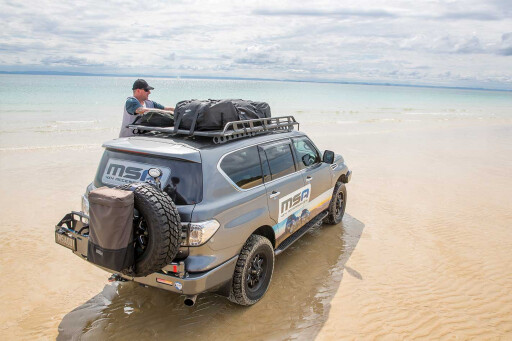 The main focus of the testing is to check for stress on the attachment component and look for signs of cracking and movement outside the allowed parameters. Bike carriers – both roof-mount and towball-mount – are another example of the ‘unlikely suspect’ when it comes to compromising safety and standards.
The main focus of the testing is to check for stress on the attachment component and look for signs of cracking and movement outside the allowed parameters. Bike carriers – both roof-mount and towball-mount – are another example of the ‘unlikely suspect’ when it comes to compromising safety and standards.
Grad recounted how there is potential for, say, four-bike, tow-ball mounted bike carriers to effectively ‘twist off’ the ball part of the towball. It makes sense, too, when you think of a combined weight (the carrier and four adult bikes) of around 80kg, swinging off the towball – especially when most of that weight (in the form of the bikes themselves) is a considerable vertical distance away from the anchor point.
Bike carriers are also an example of state-by-state legislation, primarily in regards to display of number plates and brake/indicator lights. Some states are far stricter than others, but for those thinking of fitting a rear/towball-mount carrier, it is well worth checking if it has – or can be fitted with – a number plate and light bar.
ALL ACCESSORIES GREAT AND SMALL
 A number of smaller accessories are also subject to compliance testing. For those of us with a less-than-modern 4x4, the thought of a compliant seat cover seems like a joke, but remember a number of modern 4x4s come standard with side airbags in the seats.
A number of smaller accessories are also subject to compliance testing. For those of us with a less-than-modern 4x4, the thought of a compliant seat cover seems like a joke, but remember a number of modern 4x4s come standard with side airbags in the seats.
Fitment of non-compliant or compatible seat covers to these seats – as in, they directly inhibit the deployment of the side airbag – is a safety concern. The seat side airbags are activated within an extremely short timeframe using a certain amount of force, so if obstructed by an overlaying material that is not made to ‘give’ when the airbags are deployed, the end result could be a more serious side-impact injury.
Factors such as the fabric used, stitch length and the tension levels used to fit the covers to the seat have to be taken into consideration when manufacturing a compliant seat cover. To measure the deployment speed of the seat side airbag and ensure it is within required levels, a high-speed camera is utilised and then footage of the seat with and without the cover is compared to measure the deployment time.
Replacement aftermarket seats need to meet the requirements of ADR3, with two tests – Static and Crash (also known as Impact) – and five subtests: Seat Anchorage, Seat Back Strength, Anchorages for Seatbelt, Child Restraint Anchorages and Head Restraint.
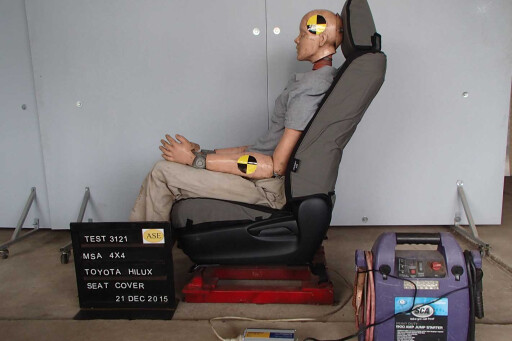 A standard vehicle has passed all of these occupant safety-related tests and has been proven to withstand incredible forces and impacts. Therefore any seat (or other original part of the vehicle) that is replaced must be done so with a product that meets exactly the same standards.
A standard vehicle has passed all of these occupant safety-related tests and has been proven to withstand incredible forces and impacts. Therefore any seat (or other original part of the vehicle) that is replaced must be done so with a product that meets exactly the same standards.
Another oft-fitted accessory is a set of sidesteps. Again, the product seems innocuous enough, but think of the effect these may have on a side-impact collision and you realise why they are subject to compliance testing (as part of ADR 72/00). The side-impact testing on this product is designed to check “crash worthiness requirements in terms of forces and accelerations measured by anthropomorphic dummies, so as to minimise the likelihood of injury to the occupants in a side impact”, according to ASE’s testing procedure.
The potential risk of injury or death to not only you and yours but also innocent bystanders (imagine a roof rack and/or its contents hurtling forward and smashing into the rear window of the rig in front of you) is simply too high.
HEAVY WITH SUSPENSE
Upgrading a 4x4’s Gross Vehicle Mass (GVM) rating is slowly becoming more popular with off-road tourers (it is a common practice in the mining industry) and has come about, in part, due to the fact new 4x4s are, in standard form, quite a bit heftier than they were 15 to 20 years ago.
The result is a reduction in load-carrying capacity; once you throw in a family of four, plus all their gear, a spare wheel/tyre, recovery equipment, and then take into account fitted accessories such as bullbars, cargo drawer systems, roof racks and spare-wheel carriers, you can easily exceed a vehicle’s GVM.
A heavier-than-designed vehicle puts more stress on essential components such as suspension, tyres, brakes and the chassis, rendering the vehicle illegal and unsafe.
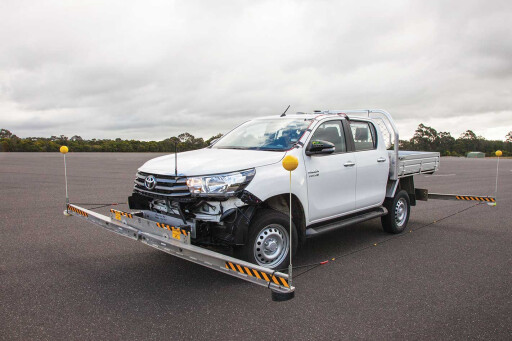 Compliance testing for GVM is one of the most time-consuming, with so many components affected by the additional weight. Automotive Safety Engineering’s Grad Zivkovic explained: “GVM is a major upgrade. The vehicle needs to be reclassified and another compliance plate issued. There are serious consequences (if GVM is exceeded on a standard vehicle) if it is, for example, upgraded too much and the brakes are not designed to dissipate the increased heat they generate during braking as a result of trying to pull up the extra weight. “Another design rule we use for testing GVM is the stability control test for when you’re changing lanes at different speeds – 60, 80 and 100km/h – where the heavier load would also affect suspension (springs and shocks) during a preventative manoeuvre.”
Compliance testing for GVM is one of the most time-consuming, with so many components affected by the additional weight. Automotive Safety Engineering’s Grad Zivkovic explained: “GVM is a major upgrade. The vehicle needs to be reclassified and another compliance plate issued. There are serious consequences (if GVM is exceeded on a standard vehicle) if it is, for example, upgraded too much and the brakes are not designed to dissipate the increased heat they generate during braking as a result of trying to pull up the extra weight. “Another design rule we use for testing GVM is the stability control test for when you’re changing lanes at different speeds – 60, 80 and 100km/h – where the heavier load would also affect suspension (springs and shocks) during a preventative manoeuvre.”
So the GVM upgrade and the compliance testing needs to look at all of the separate components – brakes, suspension, chassis – to ensure that the vehicle is just as safe and performs just as effectively as before the GVM upgrade. It also needs to perform as it was designed to in all conditions, including if the driver needs to swerve suddenly, which means testing needs to be done in a controlled location.
“This type of testing has to be done away from the general public,” Grad affirmed. “If you have very soft suspension, for example, with the higher centre of gravity and increased weight, the shock absorber may not be able to dampen in the time the vehicle moves or rocks sideways, and the vehicle can overturn. We usually use full helmets, race harness and things like that.”
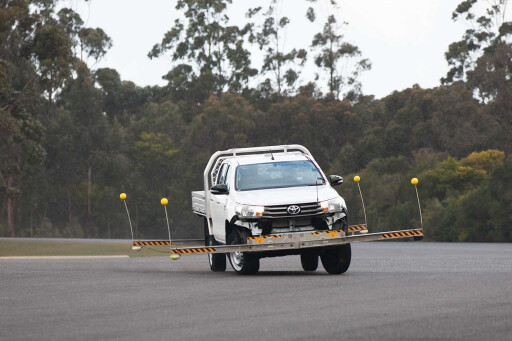 Due to the complexity and the fact that the vehicle’s overall performance is affected, a GVM upgrade process always involves retesting to meet the relevant ADRs for the particular vehicle tested. The retest also provides a summary of evidence in relation to the upgrade, according to Steve Sampson of ARB. Steve sent me a copy of what ADRs are accounted for during this process (and it is vehicle-model dependent; as an example, a 200 Series GX is classified differently to the GXL, so required ADRs differ between models) and I counted more than 30.
Due to the complexity and the fact that the vehicle’s overall performance is affected, a GVM upgrade process always involves retesting to meet the relevant ADRs for the particular vehicle tested. The retest also provides a summary of evidence in relation to the upgrade, according to Steve Sampson of ARB. Steve sent me a copy of what ADRs are accounted for during this process (and it is vehicle-model dependent; as an example, a 200 Series GX is classified differently to the GXL, so required ADRs differ between models) and I counted more than 30.
It’s a serious business, but it provides assurance for those who pay for a GVM upgrade via an aftermarket manufacturer dedicated to the best and safest product.
RULES, REGS AND THE STATES OF MIND
The Australian Design Rules are, to quote the Australian Department of Infrastructure and Transport, “…national standards for vehicle safety, anti-theft and emissions. The ADRs are generally performance-based and cover issues such as occupant protection, structures, lighting, noise, engine exhaust emissions, braking and a range of miscellaneous items.”So, in short, ADRs do not govern the accessory produced, but rather the original vehicle as it first appears on the showroom floor.
To be ‘compliant’ in terms of accessories comes down to how that particular accessory does not affect, compromise or go outside the original vehicle’s ADR. Even though a product may be badged ‘ADR compliant’, the fitment of accessories and all vehicle mods are subject to state legislation, with not all states ‘on the same page’ when it comes to fitment of aftermarket accessories; most notably – but not exclusively – tyres and suspension.
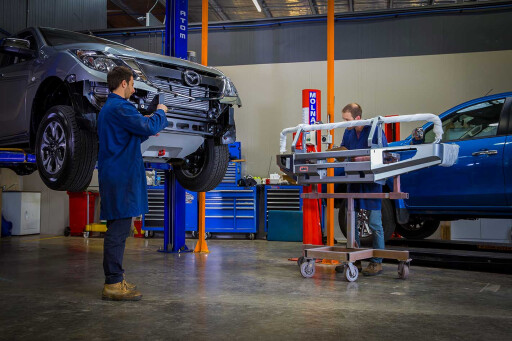 Ironman 4x4’s Kristian Ristell elaborated: “Vehicle Safety Bulletin (VSB14), National Code of Practice 11. Sec LS-2015 is the key regulation with which we comply (for suspension mods). This is a federally established National Code of Practice. It sounds good except that now some states are introducing their own version. The industry and the Australian Automotive Aftermarket Association spent a substantial amount of money testing for compliance. The tests resulted in changes to VSB14 which now allows fitting of a suspension kit with a lift of not more than 50mm without the need for ESC testing, which cost upwards of $20K per vehicle.”
Ironman 4x4’s Kristian Ristell elaborated: “Vehicle Safety Bulletin (VSB14), National Code of Practice 11. Sec LS-2015 is the key regulation with which we comply (for suspension mods). This is a federally established National Code of Practice. It sounds good except that now some states are introducing their own version. The industry and the Australian Automotive Aftermarket Association spent a substantial amount of money testing for compliance. The tests resulted in changes to VSB14 which now allows fitting of a suspension kit with a lift of not more than 50mm without the need for ESC testing, which cost upwards of $20K per vehicle.”
You can see what a minefield this can be for aftermarket manufacturers when states move the goal posts. You also realise just how big regulation adherence is when you see the section of VSB14 that affects suspension mods runs for 80 pages.
THE FINAL WORD
The good news is you don’t have to remember all the different ADRs and Australian Standards that apply to every accessory you’re contemplating fitting to your vehicle. If you’re looking to purchase a compliant or approved product then all that hard work has already been done by the aftermarket manufacturer.
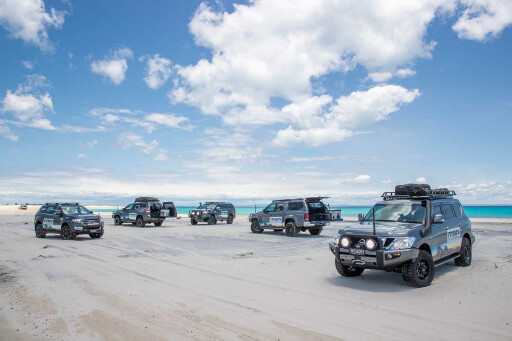 In terms of what to look for when confirming a product is compliant and/or meets certain AS, that’s pretty straightforward: all products will be marked/tagged/branded as such, and that goes for anything from bars to tie-down straps.
In terms of what to look for when confirming a product is compliant and/or meets certain AS, that’s pretty straightforward: all products will be marked/tagged/branded as such, and that goes for anything from bars to tie-down straps.
For more assurance you can always chat to your local and knowledgeable aftermarket retailer, or you could contact your state’s vehicle certifying engineers – these folks are always up for a chat to offer advice and will be able to tell you whether that product is, in turn, affected by particular state regulations.
Compliancy takes time and costs money, some of which flows on to the consumers when it is time to lay down their hard-earned. However, the end result is the purchase of a piece of equipment that’s safe and functions as designed within the vehicle’s ADR parameters. Sure, we’ve banged on about safety throughout this story, but this preaching on the subject shouldn’t have any influence on the buying decision.
You just need to ask yourself one question: Is it better to go cheap and risk yours and your loved ones’ safety? Nah, we didn’t think so, either.

COMMENTS